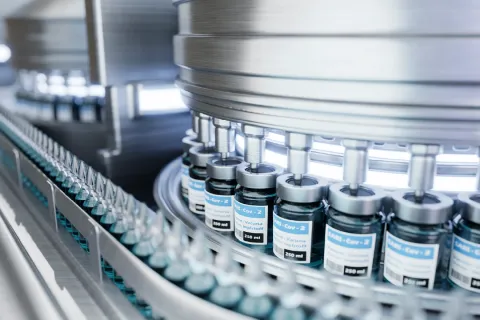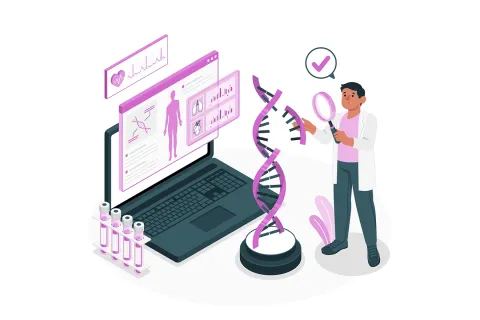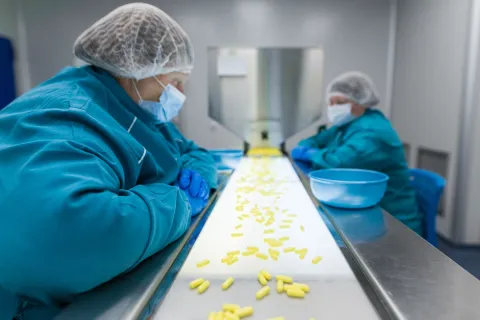
In the ever-evolving pharmaceutical landscape, artwork lifecycle coordination has emerged as a dynamic and innovative approach to mitigating risks and ensuring timely approvals. With increasing regulatory scrutiny, global market expansion, and digital transformation across pharmaceutical operations, the intricate process of managing artwork throughout its lifecycle—encompassing design, revisions, artwork approvals, and Regulatory Compliance—requires fresh perspectives and proactive strategies. As pharmaceutical companies strive to deliver groundbreaking therapies and treatments, they recognize the need for efficient artwork coordination that goes beyond traditional methods and supports global labeling, serialization, and compliance-driven packaging strategies.
In this blog, we shall explore how forward-thinking organizations are embracing innovative approaches to artwork lifecycle coordination and leveraging technology, collaboration, and streamlined processes to enhance efficiency, reduce risks, and propel their brands to new heights in the competitive pharmaceutical sector. By aligning artwork lifecycle management with regulatory intelligence and digital artwork platforms, we shall uncover the transformative power of artwork lifecycle coordination in today’s pharmaceutical landscape.
Understanding Artwork Lifecycle Coordination
Artwork lifecycle coordination involves the strategic management of artwork processes from the initial stage of design creation to the final stage of approval and subsequent revisions. It encompasses various stages, including artwork creation, content development, review cycles, Regulatory compliance checks, and the final artwork approval for production. This end-to-end coordination is critical for ensuring accuracy, speed to market, and compliance across global regulatory submissions.
Effective coordination requires collaboration among cross-functional teams. These teams include packaging engineers, graphic designers, Regulatory experts, marketing personnel, and quality assurance professionals. By establishing clear processes, creating efficient communication channels, and utilizing technology-driven solutions such as Artwork Management Systems (AMS) and digital proofing tools, artwork lifecycle coordination aims at reducing errors, delays, and compliance issues while maintaining a streamlined and compliant artwork management system.
Mitigating Risks in the Artwork Lifecycle
Here are some of the critical aspects guiding risk mitigation throughout the artwork lifecycle:
Regulatory Compliance
The pharmaceutical industry is subject to stringent regulations on packaging and labeling requirements. Non-compliance can lead to severe consequences, such as product recalls, legal repercussions, and damage to brand reputation. With frequent updates from global health authorities such as the FDA, EMA, MHRA, and other regional regulators, maintaining compliance has become more complex than ever.
Effective artwork lifecycle coordination ensures that the artwork aligns with Regulatory guidelines, including accurate product information, proper use instructions, and mandatory warning labels. Continuous regulatory monitoring and version control throughout the artwork lifecycle help mitigate compliance risks, thereby maintaining adherence to industry standards.
Quality Control
Artwork errors or inconsistencies can have far-reaching consequences, including delays in product launches, increased costs, and compromised patient safety. Through meticulous quality control measures, artwork lifecycle coordination ensures that artwork elements, including text, images, barcodes, and branding, undergo thorough proofreading and verification processes. Automated quality checks and AI-enabled validation further enhance accuracy and reduce manual errors.
By implementing robust quality control checks at each stage of the artwork lifecycle, companies can minimize the risk of errors, ensuring that only accurate and compliant artwork is approved for production.
Change Management
In the dynamic pharmaceutical environment, change management is a key aspect of artwork lifecycle coordination. Any modifications to product information, Regulatory requirements, or branding elements necessitate efficient change management processes, which in turn help avoid errors or inconsistencies in the artwork. This is especially critical for post-approval changes, variations, and line extensions across multiple markets.
By implementing standardized change management procedures, including clear documentation, approvals, and tracking mechanisms, pharmaceutical companies can mitigate risks associated with artwork revisions. This reduces the likelihood of errors, delays, and compliance issues.
Ensuring Timely Approvals
Pharmaceutical companies need to concentrate on the following key aspects to accelerate approval processes for artwork:
Streamlining Workflows
Effective artwork lifecycle coordination streamlines workflows by clearly defining roles, responsibilities, and approval hierarchies. By establishing efficient communication channels and leveraging technology solutions, companies can ensure seamless collaboration among their stakeholders, thus reducing bottlenecks and delays in the approval process. Digital workflow automation and centralized dashboards provide real-time visibility into artwork status and approval timelines.
Automated workflow systems can provide real-time visibility, task tracking, and notification mechanisms, which will enable the timely and efficient routing of artwork for reviews and approvals.
Collaboration and Communication
Timely approvals depend on effective collaboration and communication among various stakeholders involved in the artwork lifecycle. Regular meetings, clear feedback mechanisms, and synchronized timelines foster alignment, reduce chances of miscommunication, and expedite the artwork approval process. Cloud-based collaboration platforms enable faster reviews, controlled access, and audit-ready documentation.
Leveraging digital collaboration tools and centralized platforms helps streamline communication, allowing stakeholders to provide feedback, track changes, and promptly resolve queries, thereby ensuring timely approvals.
Regulatory Knowledge and Expertise
Artwork lifecycle coordination necessitates a deep understanding of Regulatory requirements and industry best practices. Companies should invest in Regulatory expertise or collaborate with external consultants to ensure that the artwork is developed and managed in compliance with the applicable regulations. Expert-led regulatory artwork services help navigate country-specific labeling requirements and submission expectations.
Regulatory experts can guide companies through complex Regulatory frameworks, anticipate potential issues, and proactively address compliance concerns, expediting the approval process and reducing Regulatory risks.
Artwork lifecycle coordination plays a vital role in mitigating risks and ensuring timely approvals in the pharmaceutical sector. Companies need to ensure the overall coordination of artwork processes, from design creation to the final approval, to maintain Regulatory compliance, minimize errors, and safeguard brand reputation. In fact, they can optimize their artwork lifecycle coordination by focusing on Regulatory compliance, quality control, change management, streamlining workflows, collaboration, and Regulatory expertise. This approach also supports faster global product launches and improved operational efficiency.
Effective artwork lifecycle coordination establishes a foundation for operational excellence, enhances compliance, and fosters brand integrity. By prioritizing these aspects, pharmaceutical companies can navigate the complexities of artwork management, stay ahead of Regulatory requirements, and deliver safe and reliable pharmaceutical products to patients worldwide.
Freyr’s artwork lifecycle coordination services combine regulatory expertise, technology-driven solutions, and global market experience to support end-to-end artwork management. Our services encompass comprehensive knowledge and expertise in the entire artwork lifecycle management process, including supply chain activities, packaging artwork development, and artwork submission support. Know more about our Artwork Lifecycle Coordination and Regulatory Artwork Services to stay compliant and market-ready.









